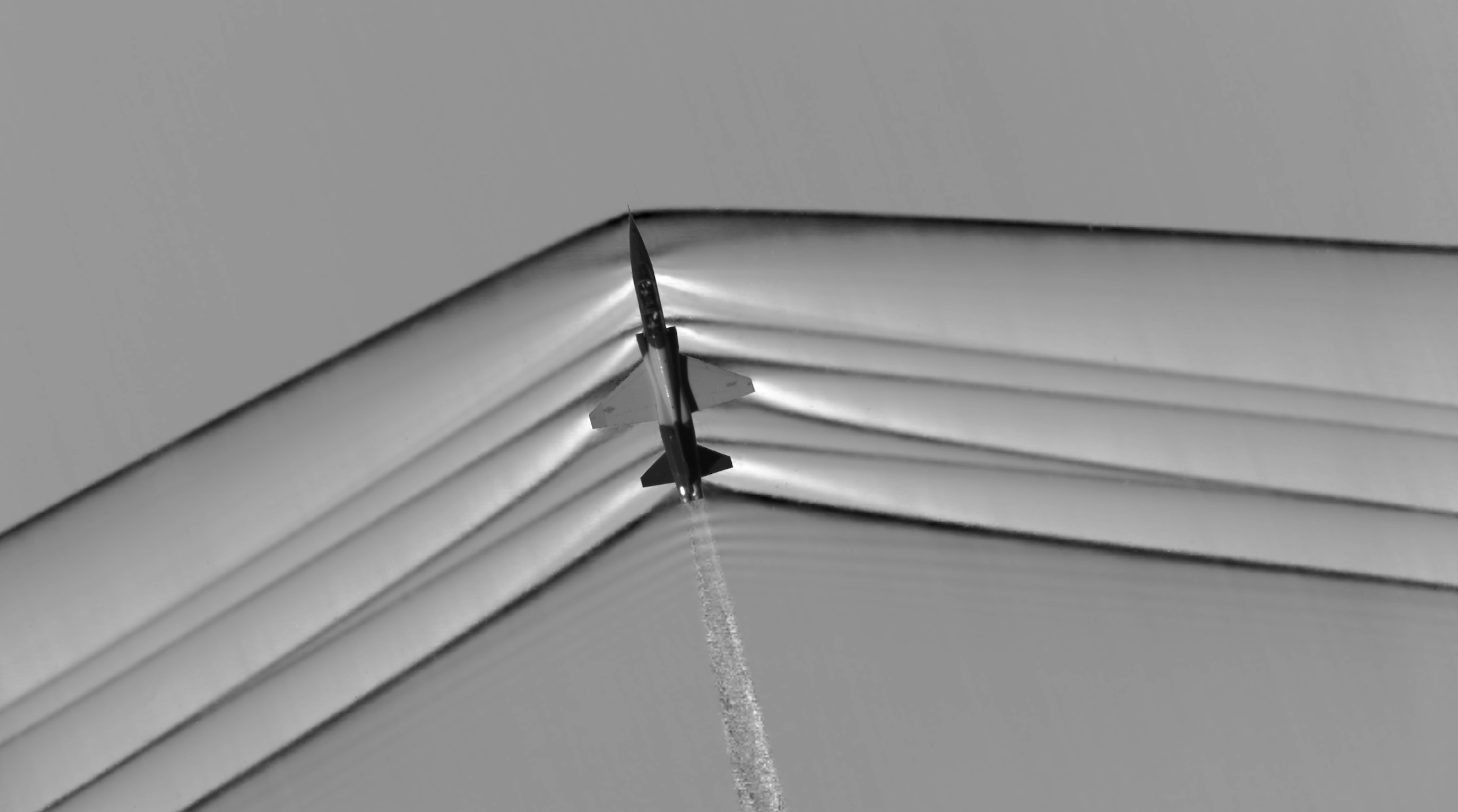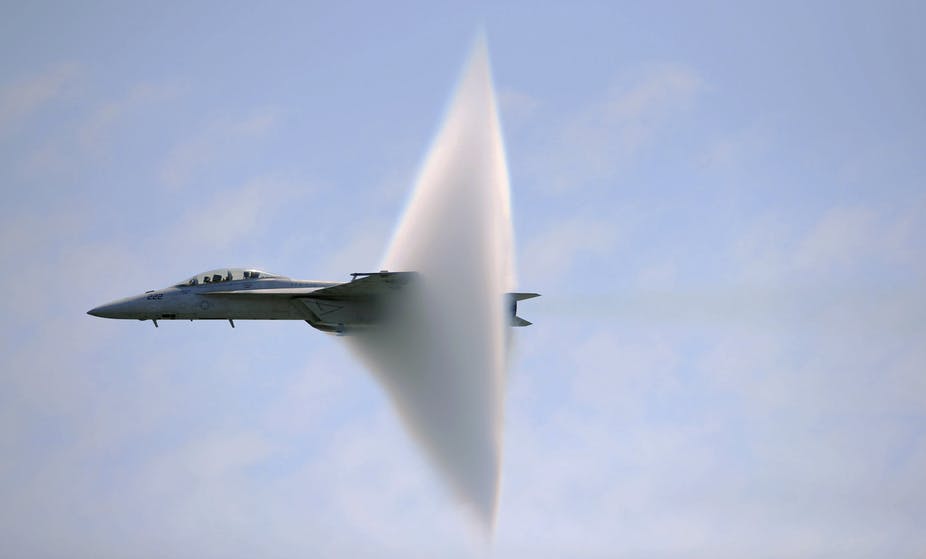
The semantics of supersonic flight were much debated in the late 1940's. However, what many scientists and physicists would have agreed upon at the time was this: when an aircraft reached the necessary ~761 miles per hour that was the speed of sound, (because sound travels different speeds at different altitudes and temperatures) the plane would be ripped apart by shock waves. These inferences were supported by previous test flights in which the crafts would begin to shake violently, sometimes losing parts in the forces.
So, the speed of sound earned its name, the "sound barrier". An impossible wall that no man could cross and survive. At Muroc Air Base in California, some Army Air Corps engineers believed it could, in fact, be possible to pass Mach 1, break through the barrier, and come out the other end unscathed. However, when Chuck Yeager signed up to be the test pilot in the Bell X-1, it was generally agreed upon that he would most likely not make it out alive.
Approaching the speed of sound causes shock waves to build up on the wings. This impedes lift provided by airflow, causing turbulence and wreckage.

A Schlieder photograph depicting the pressure behind sound waves.
Since Chuck Yeager proved that breaking the sound barrier was indeed possible, this has provided the necesarry research to advance in supersonic technology, even today. Not only did he break the physical barrier, but he also broke the barrier of knowledge and information that continues to serve engineers and scientists well into the 21st century.

Sonic boom in a supersonic jet.